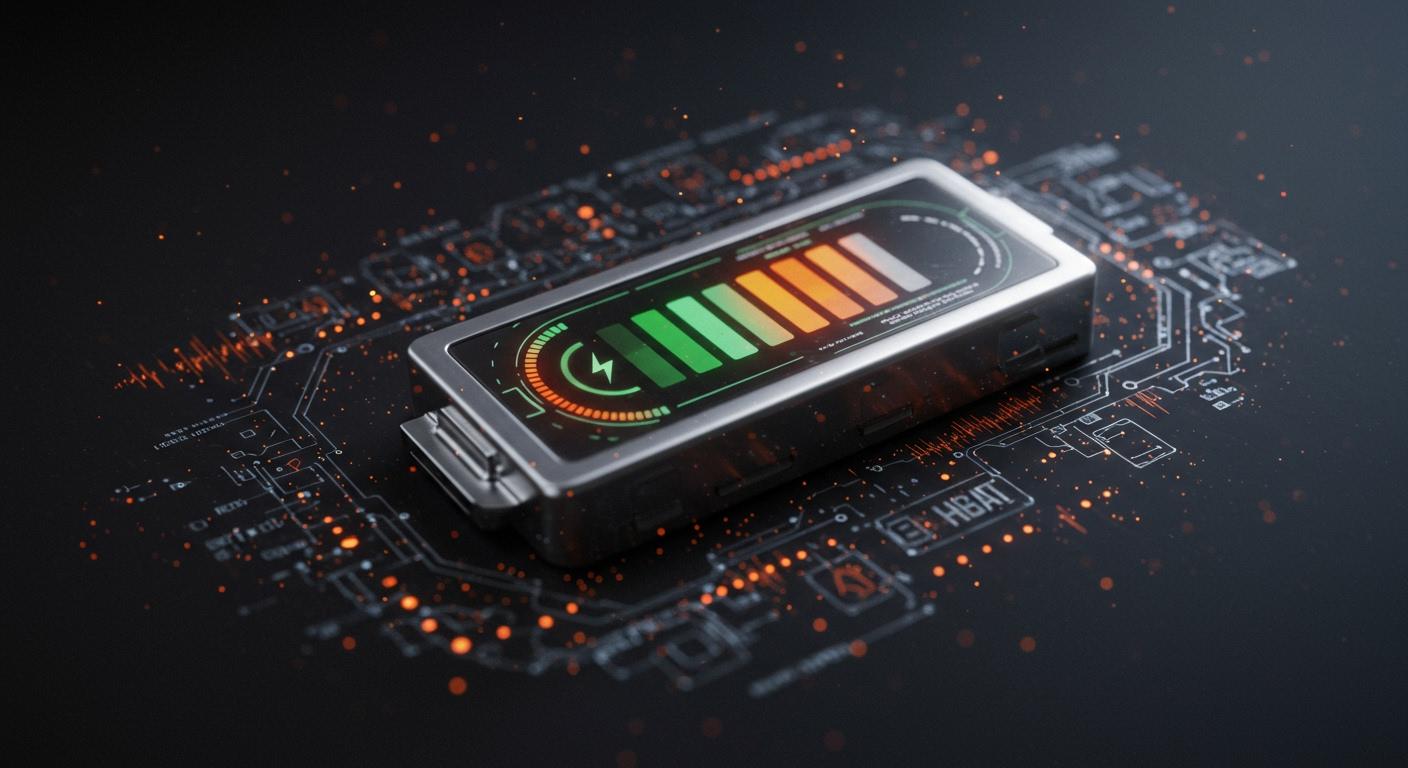Battery life for next-gen lithium cells
Imagine picking up your phone in the morning and never worrying about a midday charge. Next-gen lithium cellls now offer you longer battery life thanks to advancements in energy density and storage. You rely on these improvements every day, whether you use a laptop for work or manage industrial equipment. Better batteries mean your devices last longer and support your busy lifestyle. Understanding these changes helps you make smarter choices for both technology and sustainability.
Key Takeaways
- Next-gen lithium batteries can last 8 to 15 years, reducing replacements and electronic waste.
- Advanced battery management systems optimize charging, extending battery life by 30-50%.
- Innovations like solid-state technology and silicon anodes increase energy density and safety.
- Recycling advancements recover valuable materials, significantly lowering environmental impact.
- These batteries enhance daily life by providing longer usage times and faster charging for devices.
Battery life improvements
Lifespan extension
You now benefit from remarkable advances in battery lifespan thanks to next-generation batteries. Modern lithium cells can last up to 750% longer than previous generations. You can expect a typical battery lifespan of 8 to 15 years, which means fewer replacements and less electronic waste. This improvement comes from a combination of new materials, smarter management systems, and innovative battery technologies.
Tip: Longer battery lifespan means you save money and reduce your environmental impact over time.
Several new technologies and management techniques drive these gains:
- Solid-state battery technology offers cycle life exceeding 5,000 charges and improves safety by replacing liquid electrolytes.
- Advanced battery management systems use AI and machine learning to optimize charging, extending battery life by 30-50%.
- Sophisticated electrode designs, such as silicon-composite anodes, minimize degradation during charging cycles.
- Cathode innovations, including surface stabilization and protective coatings, reduce capacity fade and slow impedance growth.
- Breakthroughs in electrolyte chemistry create stable interfaces, minimizing unwanted reactions and boosting battery efficiency.
Recent research highlights how new materials influence battery lifespan and energy density. The table below summarizes key findings:
| Key Finding | Description |
|---|---|
| Dynamic Discharge Profiles | Varying discharge profiles can enhance battery lifetime by up to 38%. |
| Realistic Load Profiles | Testing under real-world conditions helps you understand aging mechanisms. |
| Importance of Current Pulses | Low-frequency current pulses play a major role in battery aging. |
You see these improvements reflected in devices with higher energy density, which allows for longer use between charges and a more reliable experience.
Cycle performance
Cycle performance measures how many times you can charge and discharge a battery before its capacity drops below a usable level. Next-generation batteries now deliver over 3,500 cycles at 80% depth of discharge (DoD), far surpassing older lithium-ion cells, which lasted only about 500 cycles at the same DoD. This leap in battery performance means your devices and vehicles stay functional for many more years.
Advanced battery management systems play a crucial role in maintaining cycle performance and energy density. The table below outlines how these systems work to maximize battery life:
| Function/Benefit | Description |
|---|---|
| Balancing System | Ensures equal charge levels across cells, preventing capacity loss. |
| High Power Balancing | Operates at 20 A for rapid balancing and stable performance. |
| Comprehensive Monitoring | Constantly checks voltage, temperature, and resistance for optimal control. |
| Predictive Analytics | Uses data to manage charging/discharging, enhancing battery lifespan. |
| Thermal Management | Efficiently manages heat for optimal battery operation. |
| Maintenance-Free | Eliminates the need for regular maintenance, ensuring reliability. |
You experience the benefits of these improvements every day. Devices powered by next-generation batteries offer higher energy density, greater battery efficiency, and longer service life. These advances help you rely on your technology for work, travel, and entertainment without constant worry about battery life.
If you want to explore the science behind these improvements, several leading studies provide in-depth analysis:
| Title | Authors | Year | Source |
|---|---|---|---|
| Accelerated aging characterization of lithium-ion cells | Gewald, T. et al. | 2020 | Batteries |
| A review on lithium-ion battery ageing mechanisms | Barré, A. et al. | 2013 | J. Power Sources |
| Predictive Battery Lifetime Modeling at the National Renewable Energy Lab | Gasper, P. & Smith, K. | 2021 | NREL |
| Remaining useful life prediction for lithium-ion battery storage system | Ansari, S. et al. | 2022 | Energy Rep. |
With these advancements, you can trust that next-generation batteries will deliver reliable, long-lasting power for your devices and vehicles. Higher energy density and improved battery efficiency ensure you get the most out of every charge, making your daily life easier and more sustainable.
Next-generation batteries: Key advancements

Materials innovation
You see major changes in the materials used for next-generation batteries. Manufacturers now focus on eco-friendly materials and rejuvenation techniques to boost both performance and sustainability. You benefit from advances in solid-state batteries, silicon anodes, and alternative chemistries like sodium-ion batteries. These innovations help increase energy density, making your devices last longer and charge faster.
Next-generation batteries use all-ceramic separators instead of traditional polymer membranes. This change gives you superior thermal stability and mechanical strength, especially in extreme conditions. Inorganic electrolytes replace organic ones, reducing safety risks at high temperatures and improving battery reliability.
You also notice improvements in sustainability. The addition of 0.2% CeO2 as a particle regulator optimizes particle size to 1–3 μm. This modification leads to a 2.44% degree of Li+/Ni2+ disordering, extending the cycle life of the cathode battery by 297 cycles. You save money and help the environment because the life cycle cost and carbon footprint drop by nearly 24%.
- Advances in solid-state batteries
- Silicon anodes for higher energy density
- Sodium-ion batteries as alternatives
- All-ceramic separators for stability
- Inorganic electrolytes for safety
- CeO2 particle regulators for sustainability
Graphene and LiFePO4
Graphene plays a key role in next-generation batteries, especially for electric vehicles. You get faster charging, higher power output, and longer battery life. The table below shows how graphene improves battery performance and energy density:
| Benefit | Description |
|---|---|
| Improved Conductivity | Graphene provides a highly conductive network, allowing for faster charging and higher power output. |
| Structural Stability | Acts as a protective 'skeleton' for electrodes, enhancing their ability to withstand volume changes. |
| Increased Energy Capacity | High specific surface area allows for more electrochemical reaction sites, boosting energy density. |
| Extended Cycle Life | Reinforces electrode materials, enabling more charge/discharge cycles before performance degradation. |
You also see safety and performance improvements in LiFePO4 batteries compared to other lithium-ion batteries. LiFePO4 technology gives you robust thermal stability and a low risk of combustion. The tables below highlight these advantages:
| Feature | LiFePO4 | Traditional Lithium-Ion |
|---|---|---|
| Thermal Stability | High | Moderate |
| Risk of Thermal Runaway | Low | High |
| Lifespan | Long | Short |
| Component | Flammability Risk | Stability |
|---|---|---|
| Cobalt (in some lithium-ion) | High | Low |
| Nickel (in some lithium-ion) | Moderate | Moderate |
| Iron Phosphate (LiFePO4) | Low | High |
LiFePO4 technology represents a significant advancement in battery safety due to its robust thermal stability and low risk of combustion.
Next-generation batteries give you higher energy density, longer lifespan, and safer operation. You can trust these innovations to power your devices and vehicles more efficiently and sustainably.
Next-gen lithium batteries in daily use

Consumer impact
You experience the benefits of next-gen lithium batteries every day. As your devices become more powerful and portable, you expect them to last longer and charge faster. Smartphones, laptops, and wearables now rely on advanced lithium technology to deliver reliable power throughout your busy schedule. Innovations in battery design have changed how you use your devices, letting you stay connected and productive without worrying about frequent charging.
- You enjoy longer usage times and faster charging, which means you can work, play, and communicate with fewer interruptions.
- Ultra-long-life batteries reduce or eliminate the need for replacements, saving you money and time.
- Lithium batteries offer over 96% energy efficiency, so more of the energy you use goes directly into powering your devices.
Note: The demand for high-performance batteries continues to grow as you expect more from your electronics.
The table below highlights the measurable benefits you gain from these advancements:
| Benefit | Description |
|---|---|
| Lasts Longer | Up to 5000 cycles, resulting in fewer replacements. |
| Higher Efficiency | Minimal energy loss leads to a higher return on investment over time. |
| Eco-Friendly Option | Durable design and efficient energy use reduce environmental impact. |
Industrial benefits
You see next-gen lithium batteries transforming industrial operations as well. High energy density and fast charging capabilities support heavy machinery, logistics, robotics, and emergency backup systems. These improvements help you achieve greater operational efficiency and reliability.
- High energy density delivers better power for demanding equipment.
- Fast charging reduces downtime, keeping your operations running smoothly.
- Improved performance enhances reliability in critical applications.
| Industrial Sector | Benefits of Next-Generation Lithium Batteries |
|---|---|
| Heavy Machinery | Strong support for heavy machinery and equipment, enhancing efficiency |
| Logistics | Improved power delivery and reduced downtime in operations |
| Robotics | Enhanced performance in automated guided vehicles (AGVs) |
| Emergency Backup Systems | Reliable power supply for critical applications |
You also benefit from lower maintenance costs and fewer battery replacements, especially in electric vehicles. These advantages make your operations more cost-effective and sustainable.
Environmental impact
Sustainability
You play a vital role in shaping a sustainable future by choosing next-generation lithium batteries. These batteries support global sustainability initiatives by improving energy storage for renewable energy and electric vehicles. You help reduce carbon emissions and dependence on fossil fuels when you use advanced battery technologies.
- The production of lithium batteries requires resource extraction, which can lead to habitat destruction and water pollution.
- Manufacturing processes release carbon emissions, contributing to climate change.
- Improper disposal creates electronic waste, contaminating soil and water and threatening wildlife and human health.
You see new battery chemistries like lithium-sulfur, sodium-ion, and solid-state batteries gaining popularity. These options use more abundant materials and offer better recycling potential. The table below shows how these advancements contribute to sustainability goals:
| Evidence Description | Contribution to Sustainability Goals |
|---|---|
| Next-gen lithium batteries use alternative materials and improve recyclability. | They reduce reliance on scarce resources and support environmental targets. |
| Electric vehicles powered by advanced batteries lower emissions in transportation. | This shift helps fight global climate change. |
| Battery management strategies extend lifespan and improve recycling. | You minimize energy loss and environmental impact. |
| Manufacturers adopt high-density, cost-effective batteries. | This promotes sustainability in the EV sector. |
By choosing devices with next-generation lithium batteries, you support cleaner energy and a healthier planet.
Recycling
You benefit from major advancements in lithium battery recycling. Mechanochemical recycling now allows you to recover lithium and valuable metals efficiently and with less environmental harm. This method uses less energy and water than traditional mining, making it both cost-effective and eco-friendly.
- Greenhouse gas emissions drop by up to 81%.
- Water use decreases by up to 88%.
- Energy consumption falls by up to 89% compared to mining.
You also see new recycling technologies, such as deep eutectic solvent extraction and microbe-based leaching, improving metal recovery rates. Digital tools like cloud platforms and blockchain help track materials and automate recycling processes. Collaboration among manufacturers, recyclers, and regulators ensures batteries are designed for easier recycling.
- Scalable carbon anodes and sodium powder technologies work with hydrometallurgical processes.
- Reductive calcination increases lithium recovery at lower temperatures.
- AI-driven sorting and automated disassembly boost recovery rates.
When you recycle lithium batteries, you help create a circular economy and reduce the environmental footprint of modern technology.
Future outlook
User benefits
You will see next-generation lithium batteries transform your daily life and work. These batteries will power devices that last longer, charge faster, and weigh less. You will enjoy more reliable smartphones, laptops, and electric vehicles. Lithium-ion and lithium-polymer batteries already offer high energy density, making your devices compact and portable. As technology advances, you will benefit from even greater convenience and flexibility.
- Lithium forklifts in 2025 will run longer and recharge quickly, boosting productivity in warehouses.
- Improved safety features will create a more secure environment for you and your coworkers.
- Reduced maintenance and versatile charging options will make batteries easier to use.
- New batteries will store more energy, saving you money and helping the environment.
Continuous research and development ensure that you receive more powerful, versatile, and cost-effective energy storage solutions.
You will also notice new trends shaping the battery market. The table below highlights key developments:
| Trend | Description | Projected Growth Rate |
|---|---|---|
| Solid-State Batteries | Leading in premium EVs and aviation. | N/A |
| Sodium-Ion Batteries | Dominating stationary storage, especially where lithium is scarce. | N/A |
| Silicon Anodes | Increasing capacity by 30%. | Adoption: 12%→25% by 2025 |
| Cobalt-Free Cathodes | Easing supply chain pressures. | >40% market adoption by 2025 |
Ongoing challenges
You will face several challenges as next-generation lithium batteries become more common. Technical issues, such as capacity fading in lithium-sulfur batteries, can reduce cycle life. Economic factors may force manufacturers to choose between adopting new technologies early or waiting for market stability. The current dominance of lithium-ion batteries means new options must overcome energy density limits for large-scale use.
- Technical hurdles include polysulfide dissolution and solid-electrolyte interface formation.
- Economic uncertainty affects how quickly new batteries reach the market.
- The supply chain for lithium remains fragile, especially in regions like Mexico.
- Security concerns and logistics can slow down commercial production and distribution.
Experts believe that robust recycling technologies and eco-friendly practices will help solve many of these problems. Direct recycling and advanced leaching methods are making battery recovery more efficient and sustainable.
You will see the global energy storage market grow rapidly, with home energy systems and electric vehicles driving demand. As these challenges are addressed, you can expect even more reliable, affordable, and sustainable battery solutions in the years ahead.
You now see remarkable progress in battery life, driven by innovations such as single-step laser printing, corn protein enhancements, and quantum battery research. These advancements deliver longer-lasting, safer, and more sustainable energy solutions. You benefit from improved recycling technologies and new computational models that make devices more reliable.
| Innovation Type | Description |
|---|---|
| Solid-State Batteries | Enhance safety, energy density, and battery life. |
| Silicon Anodes | Increase energy storage capacity and performance. |
| Recycling Technologies | Promote sustainability and a circular economy. |
You can expect continued breakthroughs in battery life, making your devices smarter and greener.
-

 May.2025.11.24Ternary Lithium Battery vs Lithium-ion: Complete Comparison Guide (2025 Edition)Learn More
May.2025.11.24Ternary Lithium Battery vs Lithium-ion: Complete Comparison Guide (2025 Edition)Learn More -

 May.2025.11.214S2P 18650 14.8V Battery: Complete Technical Guide, Specs, Applications & SafetyLearn More
May.2025.11.214S2P 18650 14.8V Battery: Complete Technical Guide, Specs, Applications & SafetyLearn More -

 May.2025.11.18PCM vs BMS in Lithium Batteries: What’s the Difference and Which One Do You Need?Learn More
May.2025.11.18PCM vs BMS in Lithium Batteries: What’s the Difference and Which One Do You Need?Learn More -

 May.2025.11.17Custom Li-ion Battery Design for Medical Devices (2025 Comprehensive Guide)Learn More
May.2025.11.17Custom Li-ion Battery Design for Medical Devices (2025 Comprehensive Guide)Learn More -

 May.2025.11.17The Future of Lithium-Ion Batteries: Innovation, Sustainability, and Global Market TrendsLearn More
May.2025.11.17The Future of Lithium-Ion Batteries: Innovation, Sustainability, and Global Market TrendsLearn More
















